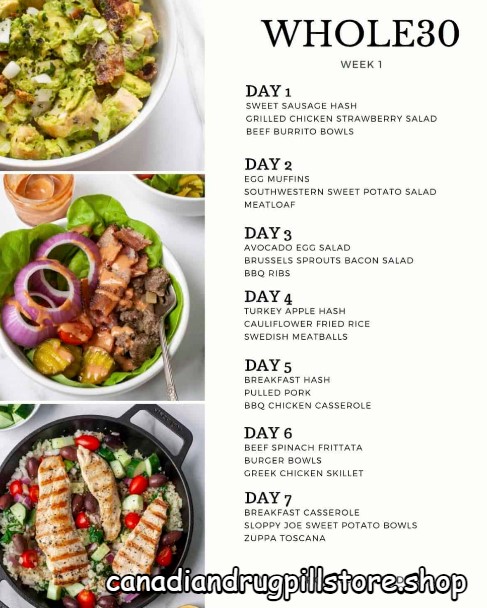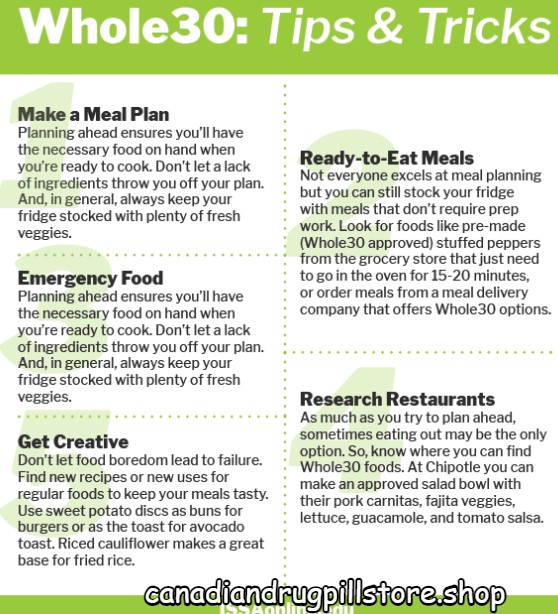The Whole30 Diet Food List: A Comprehensive Guide
Introduction
Welcome to the ultimate guide on unlocking the Whole30 diet food list! If you're ready to embark on a journey towards healthier eating habits and want to know what foods are allowed on the Whole30 diet, you're in the right place. Let's dive in!
Embarking on a journey towards healthier eating habits often involves understanding which foods to include and which to avoid. In the realm of dietary regimens, the Whole30 diet has gained popularity for its focus on whole, unprocessed foods. Central to the Whole30 approach is its meticulously curated list of permissible foods, known as the Whole30 diet food list.
The Whole30 diet food list serves as a comprehensive guide for individuals looking to overhaul their eating habits and reset their bodies. This carefully curated list outlines the foods that are allowed during the 30-day program, eliminating any potential sources of inflammation, allergens, or other dietary triggers. By adhering to the Whole30 diet food list, participants aim to identify food sensitivities, reduce cravings, and improve overall health and well-being.
What is the Whole30 Diet?
Before we delve into the specifics of the Whole30 diet food list, let's first understand what the Whole30 diet is all about. The Whole30 diet is a 30-day program designed to reset your body and eliminate potentially inflammatory foods that may be causing health issues.
Allowed Foods on the Whole30 Diet
- Vegetables: Incorporate a variety of vegetables into your meals, including leafy greens like spinach and kale, cruciferous vegetables such as broccoli and Brussels sprouts, and colorful options like bell peppers and carrots. Vegetables are rich in essential nutrients, fiber, and antioxidants, making them a cornerstone of the Whole30 diet. They provide vital micronutrients that support overall health and well-being while adding flavor and texture to your meals.
- Fruits: Enjoy a wide array of fruits, both fresh and frozen, as part of your Whole30 diet. From sweet options like berries, apples, and oranges to tropical delights like mangoes and pineapples, fruits provide natural sweetness and a burst of vitamins, minerals, and fiber. While fruits are nutritious, it's essential to consume them in moderation, as they contain natural sugars that can impact blood sugar levels.
- Proteins: Prioritize high-quality proteins to support muscle repair, growth, and satiety on the Whole30 diet. Opt for lean meats such as chicken breast, turkey, and lean cuts of beef and pork, as well as fatty fish like salmon and mackerel rich in omega-3 fatty acids. Eggs are also an excellent source of protein and versatile ingredient for breakfast, lunch, or dinner. Plant-based protein sources like tofu, tempeh, and legumes are allowed in moderation for vegetarian or vegan Whole30 participants.
- Healthy Fats: Incorporate healthy fats into your meals to support brain function, hormone production, and overall health. Avocados are a standout source of heart-healthy monounsaturated fats, while nuts and seeds provide a satisfying crunch and essential fatty acids. Cooking oils like olive oil, coconut oil, and avocado oil are excellent choices for sautéing, roasting, or dressing salads. Don't shy away from fats on the Whole30 diet; embrace them as a vital part of your balanced eating plan.
- Nuts and Seeds: Snack on nuts and seeds for a convenient source of protein, healthy fats, and fiber on the Whole30 diet. Almonds, walnuts, and cashews are popular options, but don't overlook seeds like chia, flax, and pumpkin seeds. These nutrient-dense snacks provide sustained energy and help keep hunger at bay between meals. However, be mindful of portion sizes, as nuts and seeds are calorie-dense and can contribute to weight gain if consumed in excess.
Foods to Avoid on the Whole30 Diet
- Added Sugars: Say goodbye to all forms of added sugars, including honey, maple syrup, agave nectar, and artificial sweeteners.
- Grains: Eliminate all grains, including wheat, rice, oats, barley, corn, and gluten-free grains like quinoa and buckwheat.
- Legumes: Steer clear of legumes such as beans, lentils, chickpeas, and peanuts, as they may contribute to inflammation.
- Dairy: Remove dairy products from your diet, including milk, cheese, yogurt, and butter, to determine if dairy is causing any adverse effects on your health.
- Processed Foods: Cut out processed foods, including packaged snacks, pre-made meals, and anything with artificial additives or preservatives.
FAQ (Frequently Asked Questions)
Q: Can I drink alcohol on the Whole30 diet?
A: No, alcohol is not allowed on the Whole30 diet, as it can interfere with the reset process and may have negative effects on your health and well-being.
Q: Can I use condiments and sauces on the Whole30 diet?
A: While many commercial condiments and sauces contain added sugars and other non-compliant ingredients, you can make your own Whole30-approved versions at home using natural ingredients.
for more type of diets, you can read 10 Best Evidence Based Diets for Optimal Health and Longevity
Conclusion
In conclusion, the Whole30 diet food list is a blueprint for nutritional excellence, guiding individuals towards whole, unprocessed foods that nourish the body and support optimal health. By embracing the foods allowed on the Whole30 diet and eliminating potential dietary triggers, participants can reset their bodies, reduce inflammation, and cultivate a healthier relationship with food. Whether you're new to the Whole30 approach or a seasoned participant, the Whole30 diet food list serves as a valuable resource for making informed choices and unlocking the benefits of whole-food nutrition.
Congratulations on taking the first step towards unlocking the Whole30 diet food list! By incorporating Whole30-approved foods into your diet and eliminating potentially inflammatory foods, you can reset your body, improve your health, and develop lifelong healthy eating habits. Remember to listen to your body, stay consistent, and celebrate your progress along the way. Here's to a happier, healthier you!


